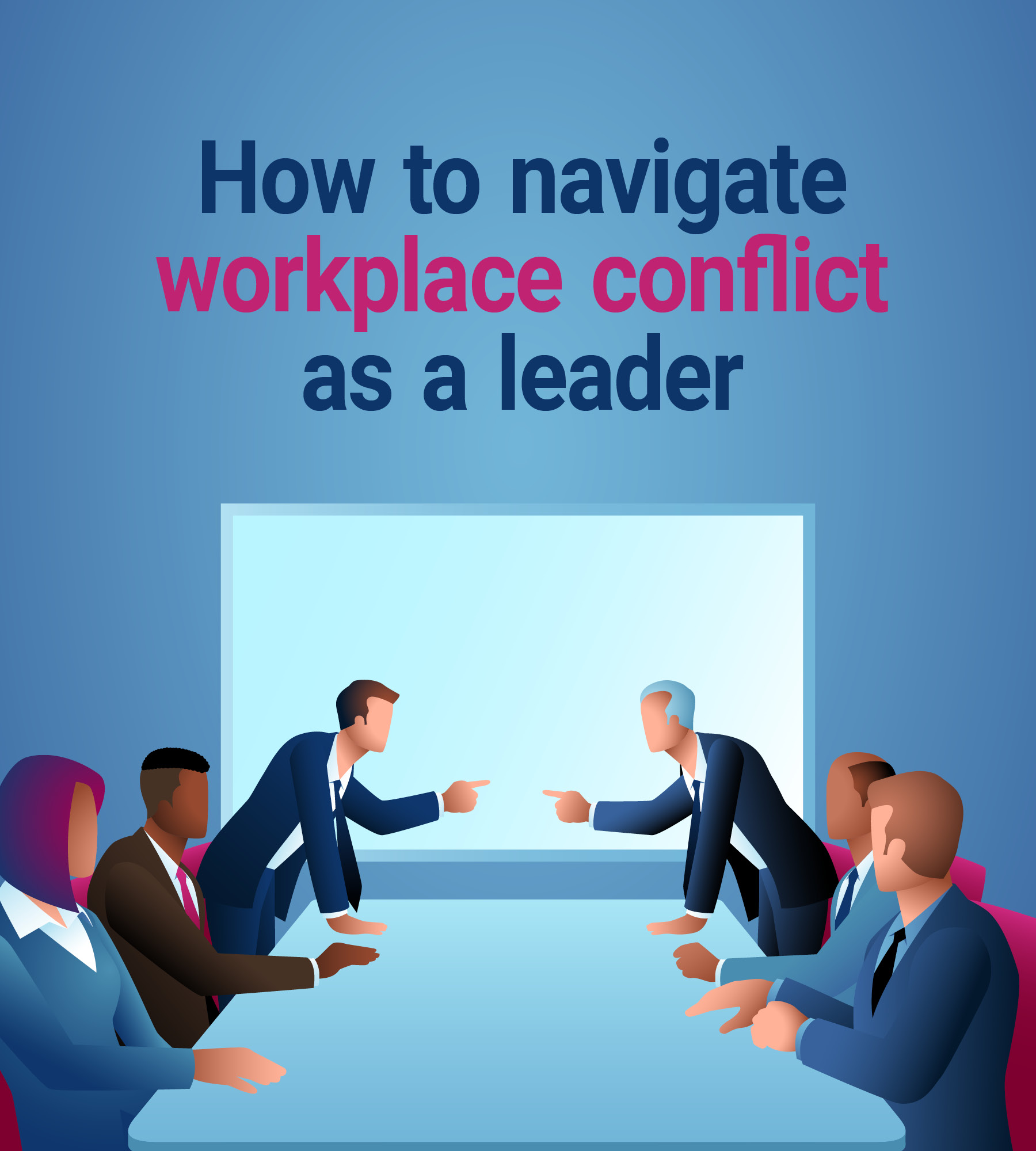Language
You can read the magazine in one of the following languages
Geolocation
You can read the global content or the content from your region

The 2024 Gallup ‘State of the Global Workplace’ report estimates nine percent of global gross domestic product (US$8.9 trillion) is lost to low employee engagement annually, with 70 percent of the variance linked to the impact of managers. Conflict, both hidden and overt, plays a key role in these statistics.
If you want to be more impactful as a leader, you need to hone your skills at navigating conflict.
It’s important to distinguish between creative conflict and social conflict. Creative conflict is different perspectives voiced and debated respectfully. It’s triangulating data from multiple angles, leading to better outcomes.
Social conflict is a different perspective – being ignored, dismissed or ridiculed. This conflict erodes confidence, health and performance by stealth. Executives can mistake social for creative conflict, not appreciating the negative impact. Decreasing social conflict is the key to thriving creative conflict.
How do you respond to social conflict? Some executives openly admit or justify avoiding conflict. Others mistakenly believe pitting people against each other creates better outcomes (it doesn’t). Others think they handle conflict well but measure against a low bar.
Conflict arises due to our brain wiring. Our animal brain perceives ‘different’ as a threat. This can cause defensiveness, making us more likely to cling to our own views. This natural inclination to feel ‘right’ helps us feel safe, but contributes to conflict when not curiously examined.

If you want to be more impactful as a leader, you need to hone your skills at navigating conflict.
What conversations are you having in your head or with others, rather than the person you need to? If you aren’t having those conversations, you aren’t as effective as you need to be. If you want to lead with impact, you need to keep raising the bar and have the conversations you need to have.
If you believe your organization is one of the ‘lucky ones’ without conflict, think again. Most dysfunctional conflict isn’t overt, it is quiet. Everyone sees the world through their own lenses, which means multiple versions of ‘truth’ exist.
Quiet conflict arises when these perspectives are ignored. People feel unseen, unheard or undervalued. They lack the confidence to raise issues, or they observe what executives do and follow suit.
When you shut down disparate voices, allow disrespect, avoid conflict or rely on others to fix it, employees can opt to stay silent. They talk behind closed doors. They are absent more often. They leave organizations. Your behavior allows others to do the same.
Quiet conflict slowly drains energy from your organization, impairing effectiveness and efficiency. It’s a hidden disease blocking better commercial outcomes. Your organization has quiet conflict – you may just not be paying attention to the signs.
Even if you think you’re adept at handling conflict, today’s world demands we get better. We now live in a VUCA (volatile, uncertain, complex and ambiguous) environment, which increases feelings of threat.
Simultaneously, we are seeing increased rates of anxiety and depression, with rising addiction to digital platforms with algorithms creating echo chambers.

Even if you think you’re adept at handling conflict, today’s world demands we get better.
These seismic shifts often push people into an ‘I am right’ mindset to help them feel safe and makes them defensive to different perspectives.
This new reality increases the likelihood for conflict, requiring you to increase your skills to guide your organization.
1. Cultivate connection by building relationships before conflict arises.
2. Value and recognize contribution and make it safe to fail, as the foundation for trust-based relationships where people want the team/organization to succeed.
3. Encourage curiosity when tension arises, so it is safe to disagree. Acknowledge multiple truths because of the different lenses worn. Don’t attack/criticize. Use ‘help me understand’ to get curious about different perspectives.
4. Don’t ignore defensiveness and dysfunction – what you walk past, you accept.
5. Recognize your own defensive reaction/discomfort. Reflect to identify what lenses you wear and where your blind spots lie. Share your learnings to help others learn self-reflection.
Getting better at conflict doesn’t mean causing it or relishing it. It means recognizing quiet conflict early, harnessing differences for stronger relationships, effective problem-solving and better outcomes.
We have always needed to get collectively better at it. The world now demands this of us. You only have one view. Get curious. The discomfort is so worth it. Expand your horizon and expand your impact.

Genevieve Hawkins
Contributor Collective Member
Genevieve Hawkins helps organizations have the conversations they need to have to improve commercial collaboration and the mental health of teams. She has a combination of skills in health, human behavior and commercial business. She has published two books on navigating mental health in the workplace, ‘Mentally at Work’ and ‘Shrinking Elephants’. For more information visit https://genevievehawkins.com.au/